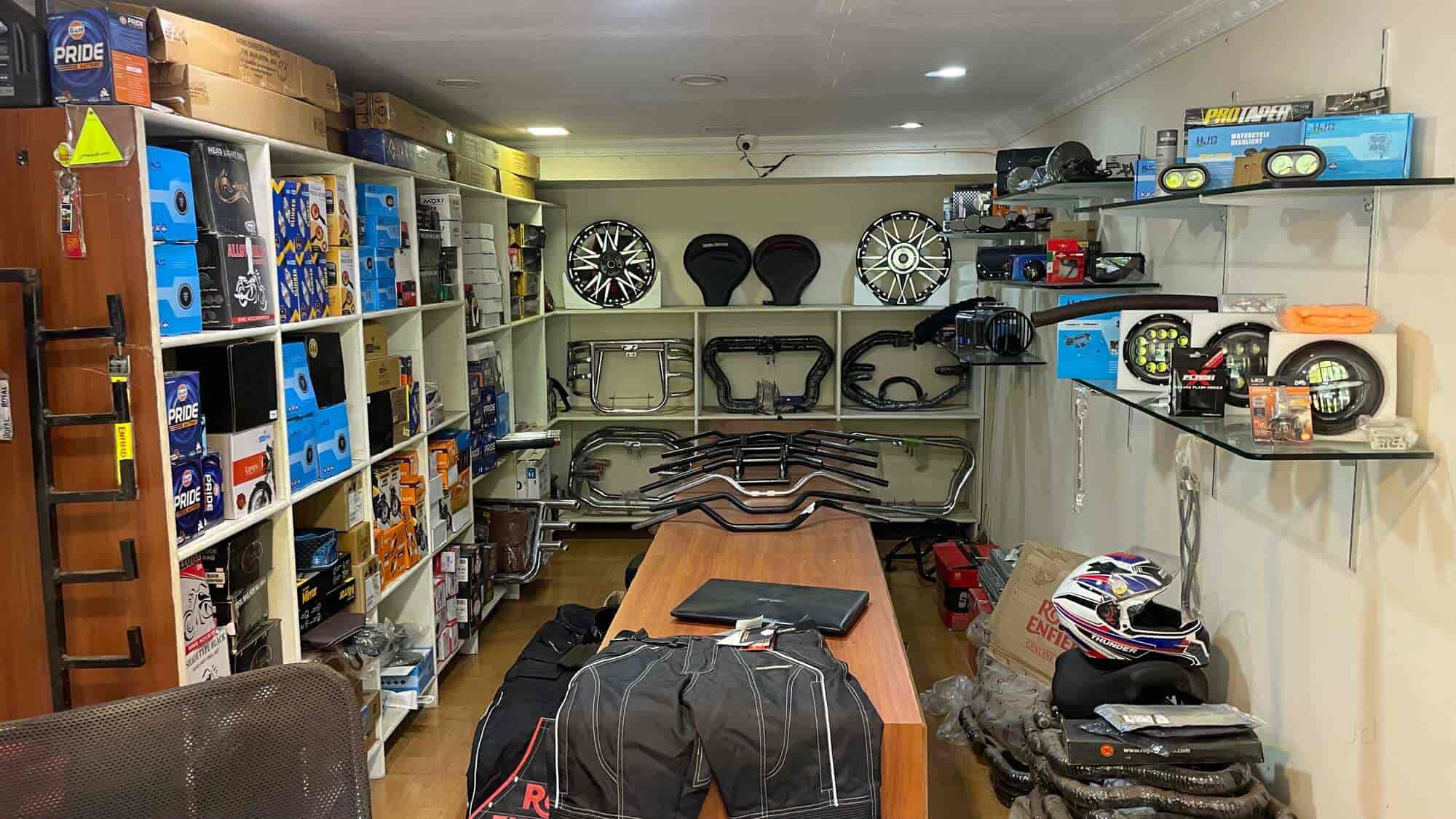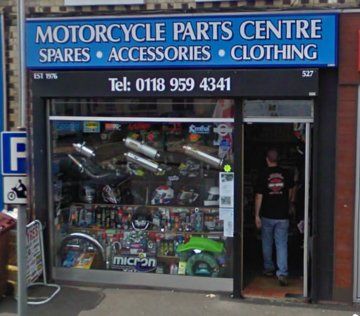Top MX Gear NZ: Gear Up for Your Following Off-Road Journey
Wiki Article
Comprehending the Vital Parts of a Motorbike: A Comprehensive Guide for Lovers
For motorcycle lovers looking to elevate their riding experience and ensure their bikes run efficiently, understanding the vital parts of a motorcycle is critical. Each aspect, from the engine's complex workings to the vital role of the stopping systems, not just influences performance but additionally safety and security and convenience.Engine Parts

The camshaft plays an essential role in regulating the timing of the engine's valves, guaranteeing the specific opening and closing needed for efficient fuel and air consumption, as well as exhaust expulsion. This timing is vital to keeping optimal engine performance and performance. Furthermore, the carburetor or fuel shot system, relying on the bike model, is liable for blending air with gas in the right proportion for burning.
The cooling system, either air or liquid-based, functions to maintain the engine's temperature level within operational restrictions, preventing overheating and ensuring longevity - motorbike shop. Each part, thoroughly developed and integrated, adds to the smooth operation of the engine, defining the motorcycle's power result and general efficiency
Transmission System
Important to the motorcycle's functionality, the transmission system guarantees effective power transfer from the engine to the wheels. This system consists of numerous important elements, including the clutch, gearbox, and last drive, each playing a vital duty in translating the engine's power into activity. The clutch, normally operated by a hand bar, serves to involve and disengage the engine from the transmission, allowing for smooth gear modifications and regulated acceleration.The transmission, commonly described as the transmission proper, has a set of gears that bikers can manually shift with to adjust the bike's speed and torque output. These equipments are arranged in a sequence that enables the motorcycle to accelerate efficiently and maintain optimal engine efficiency throughout various speeds. A lot of bikes utilize a consecutive transmission, requiring the rider to change gears in a fixed order.
Braking Devices
While recognizing the transmission system is vital to using a bike's power, similarly important is the capability to manage and quit that power effectively, which is where braking mechanisms enter play. Brakes are vital for safety and security and efficiency, giving the motorcyclist with the needed control to browse different surfaces and problems. Commonly, bikes feature two sorts of stopping systems: disc brakes and drum brakes.Disc brakes are a lot more widespread in modern-day bikes because of their remarkable efficiency. They are composed of a brake disc, caliper, and pads. When turned on, the caliper presses the brake pads against the rotating disc, converting kinetic energy into warm, therefore reducing the wheel. This system uses better warmth dissipation, regular efficiency, and improved quiting power, specifically in wet conditions.
On the other hand, drum brakes, though less common, are still discovered in some motorbikes. They function by pushing brake shoes versus the inner surface area of a drum connected to the wheel. While typically much less reliable in heat dissipation and quiting power, drum brakes are less complex and more affordable.
Understanding these stopping systems' nuances permits bikers to maintain their motorbikes appropriately and appreciate the engineering that ensures risk-free and reliable quiting.
Suspension and Steering
Suspension and guiding systems are essential components that significantly affect a bike's handling and trip comfort. The shock absorber, being composed of forks at the front and shock absorbers at the back, soaks up road irregularities, improving security and control. Front forks, Full Report normally telescopic or upside down, compress and rebound to reduce impacts, while rear shock absorbers keep tire call with the road, crucial for traction and safety.Steering, centered around the handlebars, connects the cyclist to the motorbike's directional control. The steering head bearings make certain smooth procedure, allowing exact ability to move. Correct alignment and maintenance of these bearings are vital for predictable steering response and lowering motorcyclist fatigue.
The suspension's adjustability is one more important aspect; preload, damping, and rebound settings enable modification to match different riding problems and designs. This versatility is necessary for enhancing performance, whether navigating urban roads or dealing with rugged trails. Innovations like electronic suspension systems provide real-time changes, improving trip high quality throughout varied surfaces.

Electric Solutions
After ensuring a controlled and smooth trip via effective suspension and steering systems, focus turns to the electrical systems, a crucial facet of modern-day motorbikes. These systems play an essential function not just in beginning the engine but also in powering numerous components that boost the capability and safety of the motorcycle.At the heart of a bike's electrical system is the battery, which shops electrical power needed for starting the engine and powering auxiliary systems - motocross parts nz. The alternator or generator, paired with the rectifier-regulator, guarantees the battery remains billed while the motorbike is in operation, converting power right into electric power and maintaining voltage degrees
The ignition system, one more important element, is in charge of igniting the air-fuel mix in the engine's cyndrical tubes. Modern bikes commonly make use of an electronic ignition system, supplying greater effectiveness and integrity compared to standard systems.
Lights systems, including fronts lights, tail lights, and indications, are likewise important, making sure exposure and security for the motorcyclist. Added digital components such as sensors, control units, and presents add to innovative features like fuel shot management, anti-lock braking systems (ABS), and digital dashboards, further improving the riding experience.
Final Thought
A complete understanding of a bike's essential components, including the engine, transmission system, braking systems, suspension, steering, and electrical systems, is essential for enthusiasts intending to maximize convenience, safety and security, and performance. Proficiency of these aspects enables notified choices concerning maintenance and upgrades, inevitably enhancing the riding experience. By motorbike helmets near me integrating this expertise, bikers can guarantee their motorcycles operate at peak performance and reliability, therefore making best use of both enjoyment and longevity of their vehicles.For motorbike enthusiasts looking to raise their riding experience and guarantee their bikes run smoothly, recognizing the necessary parts of a bike is paramount.Indispensable to the motorcycle's functionality, the transmission system makes certain effective power transfer from the engine to the wheels.While comprehending the transmission system is vital to taking advantage of a bike's power, just as crucial is the capacity to control and quit that power properly, which is where stopping devices come into play. Generally, motorbikes include two kinds of stopping systems: disc brakes and drum brakes.
An extensive comprehension of a motorbike's crucial elements, consisting of the engine, transmission system, stopping systems, suspension, guiding, browse this site and electrical systems, is crucial for enthusiasts intending to maximize efficiency, convenience, and safety.
Report this wiki page